The SAP Restful Application Programming (RAP) model is becoming increasingly popular among enterprises looking to modernize their ABAP development processes. In fact, according to recent industry reports, over 60% of SAP-centric organizations are planning to adopt cloud-based development environments by 2025, with the RAP model at the forefront of this transition.
SAP’s Restful Application Programming (RAP) model X:

· SAP BTP ABAP Environment: Access to an SAP BTP account with an ABAP environment. According to recent data, 55% of SAP-centric organizations are adopting SAP BTP for their cloud strategies, a number expected to grow by 20% annually.
· ABAP Development Tools (ADT): Install the ABAP Development Tools in Eclipse. Using ADT in Eclipse has shown to increase developer productivity by 30% compared to traditional development environments.
· Authorization: Ensure you have the necessary roles and authorizations in SAP BTP.
Step 1: Set Up Your Development Environment
1. Create a New ABAP Project:
– Open Eclipse and create a new ABAP Cloud project.
– Connect to your SAP BTP ABAP environment.
2. Create a New Package:
– Right-click on your project and create a new ABAP package for your application.
Step 2: Define Your Data Model
1. Create a Database Table:
– Create a new database table for your products:
– Right-click on your package, select New > Other ABAP Repository Object > Database Table.
– Define the table structure:
abap
@EndUserText.label: ‘Products’
define table zproducts {
key id: abap.numc(10);
name: abap.char(100);
quantity: abap.int4;
price: abap.curr(16,2); }
2. Create Other Necessary Tables:
– Similarly, create tables for Suppliers and StockMovements.
Step 3: Define Your Business Object
1. Create a Data Definition:
– Create a new data definition for your products:
– Right-click on your package, select New > Other ABAP Repository Object > Data Definition.
– Define the data model for your RAP application:
abap
@EndUserText.label: ‘Product’
define root view entity ZI_Product
as select from zproducts
{
key id,
name,
quantity,
price
}
2. Define Behaviors:
– Implement behaviors for your business object:
– Create a behavior definition for your BO and define CRUD operations.
abap
define behavior for ZI_Product alias Product
{
use create;
use update;
use delete;
}
Step 4: Implement Business Logic
1. Implement Logic:
– Add any custom logic in the behavior implementation class.
– For example, add a check for negative quantities:
abap
implementation class zbp_i_product unique;
endclass
class zbp_i_product implementation.
method on save.
foreach product in entities.
if product-quantity < 0.
raise exception type /dmo/cx_product
exporting textid = /dmo/cx_product=>quantity_negative.
endif.
endforeach.
endmethod.
endclass.
Step 5: Develop the User Interface
1. Generate SAP Fiori Elements UI:
– Use the RAP generator to create a Fiori elements-based UI.
– Navigate to the Service Binding and create a new service binding for your BO using the OData V4 protocol.
2. Test the UI:
– Use the preview feature in ADT to launch the Fiori elements application and test the master-detail functionality.
Step 6: Configure and Test
1. Activate and Test:
– Activate your BO and all related artifacts.
– Test the application using the Fiori launchpad in your SAP BTP environment.
Step 7: Deploy to Production
1. Prepare for Deployment:
– Ensure all objects are activated and the application is tested.
2.Deploy to SAP BTP:
– Use the deployment tools within Eclipse to transport and deploy your application to the production environment on SAP BTP.
Create a Master-Detail Page
To create a Master-Detail page in your RAP-based application, follow these steps:
1. Create Service Binding:
– In your RAP project, create a service binding using the OData V4 protocol for the ZI_Product business object.
– This will automatically generate a Fiori elements application with a master-detail interface.
2. Configure UI Annotations:
– Use UI annotations in your BO definition to customize the appearance:
abap
@UI: {
selectionField : [name, quantity],
lineItem : [ {position: 10; value: name; label: ‘Product Name’ },
{position: 20; value: quantity; label: ‘Quantity’ },
{position: 30; value: price; label: ‘Price’ } ],
headerInfo : {
typeName : ‘Product’,
typeNamePlural : ‘Products’,
title : { value: name } } }
3. Test the Master-Detail UI:
– Launch the Fiori elements application and navigate through the master-detail interface.

Using RAP to develop applications allows organizations to utilize their ABAP expertise while creating modern, cloud-ready applications that integrate with SAP’s extensive ecosystem. By following the RAP approach, you can efficiently build robust applications with advanced features and seamless SAP integration. According to IDC, by 2025, 70% of all new applications will be developed using cloud-native platforms like SAP BTP, underscoring the importance of mastering RAP for future enterprise development.
